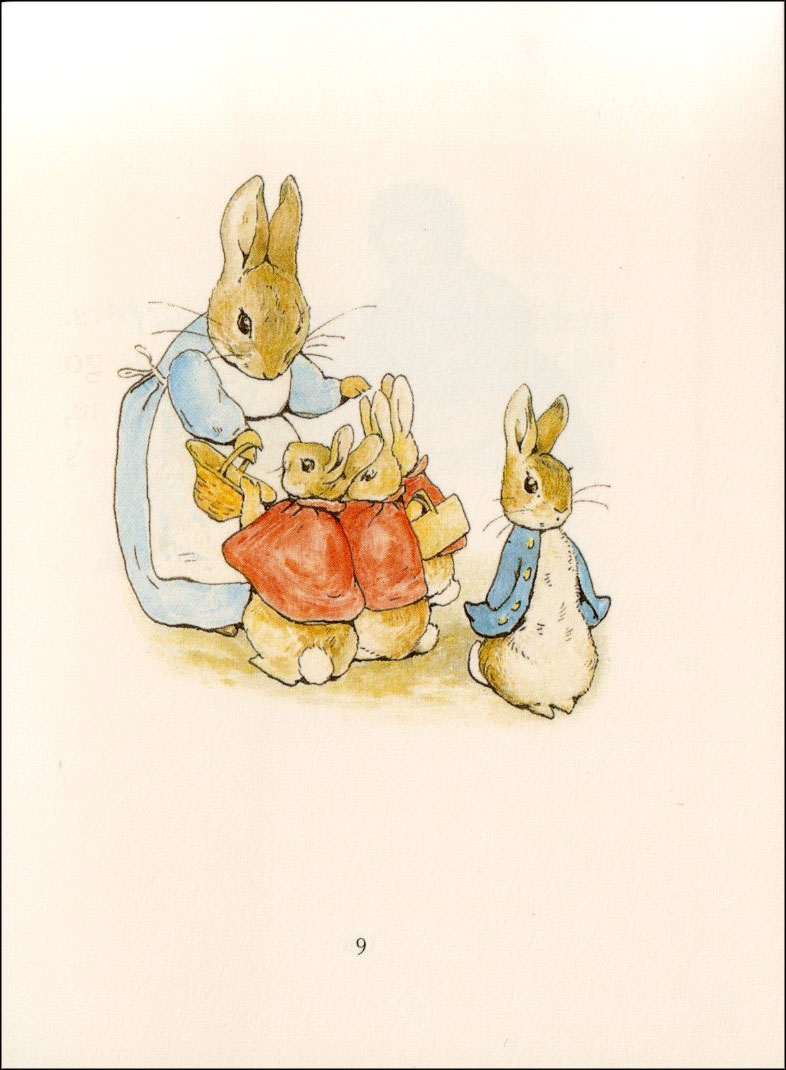
A FEW OTHER EVENTS FOR
JULY 28:
- Happy birthday Jim Davis (Garfield series) and Natalie Babbitt (Tuck Everlasting).
- Best birthday wishes to the City of Miami, Florida, established in 1886. Read It’s Hot and Cold in Miami by Nicole Rubel and Miami-Nanny Stories by Linda Milstein, illustrated by Oki S.Han.
- In 1914, World War I begins when Austria-Hungary declares war on Serbia. Read The War to End All Wars: World War I by Russell Freedman.
- It’s National Milk Chocolate Day. Read Charlie and the Chocolate Factory by Roald Dahl and The Chocolate War by Robert Cormier.
July 28, 1866, one year after the end of the American Civil War, a baby girl was born into an affluent English family. She would eventually create the world’s bestselling picture book. Helen Beatrix Potter loved drawing as a child, both images of the natural world and of the multitude of pets her family kept—rabbits, mice, newts, and a hedgehog named Mrs. Tiggy-Winkle.
In 1893 she sent a letter to a sick child, telling a story about one of those rabbits, Peter. In 1901, at age of thirty-five, she decided to fashion that story into a small book for children. In this story, Peter disobeys his mother, loses his way, and nearly loses his life in Mr. McGregor’s garden. The English publishers she consulted turned the project down, so Potter drew on her family resources and self-published 250 copies. Because the book was immediately a hit in bookshops, one of the publishers who had turned her down, Frederick Warne, offered her a contract. As Potter and her editor worked on the book, it became tighter. At their insistence, every piece of art was printed in full color. When The Tale of Peter Rabbit was released in the fall of 1902, it sold 56,000 copies in England in the next year, a remarkable sale then—a good one even now. In exquisite artwork, Peter is portrayed as a real rabbit, one who goes “lippety-lippety” when he walks, and has strong hind legs and sensitive whiskers.
Potter would follow her success with other fabulous titles over the next few years—The Tale of Squirrel Nutkin, The Tailor of Gloucester, and The Tale of Two Bad Mice. Almost the entire Potter canon, twenty-four books, has remained in print for around a century, a record that no other children’s book creator can even approach. One can study her books for so many things: animal behavior, realistic drawing, superb vocabulary, and concise writing. In Everything I Need to Know I Learned from a Children’s Book , Author Ken Follett discusses how The Story of a Fierce Bad Rabbit is the shortest thriller on record: “In just 141 words it presents suspense, crime, gunplay, and retributive justice….It still teaches me how to write.”
Potter grew up in a repressive Victorian household and had a difficult time gaining her independence. She eventually got engaged to one of the Warne brothers, certainly something good for both her and the firm. But he died before they married. In later life she married her lawyer and used her money from the books to preserve large portions of the Lake District in Northwest England. For those seeking more of the details of Potter’s life, Linda Lear’s Beatrix Potter: A Life in Nature presents a well-written and well-rounded view of this amazing woman.
Happy birthday to Beatrix Potter. It would be impossible to imagine picture books for children without the ones that she created.
Here’s a page from The Tale of Peter Rabbit:
“Now, my dears,” said old Mrs. Rabbit one morning, “you may go into the fields or down the lane, but don’t go into Mr. McGregor’s garden: your Father had an accident there; he was put in a pie by Mrs. McGregor.”
Originally posted July 28, 2011. Updated for .







The Tailor of Gloucester is my favorite. I will have to troll my bookcases to find my copy, given to me as a girl by my grandmother. My mother loved Peter Rabbit, and it is the one book I specifically remember my mother reading to me. (My dad did most of the reading.) Hmmm, hadn’t remembered that detail until just now.
Thank you for this post, you do a great job of jogging my memory about books.
I have long and long been in joyous raptured awe of the author and her books. The only thing I don’t like about Beatrix Potter’s work is that I didn’t write and illustrate it myself.
And, I have the DVD of Ms. Potter as well, and have lost track of the times I’ve viewed it. THEN, there’s every holiday season. I will pick up that glorious deluxe boxed “Beatrix Potter The Complete Tales” by Warne (Penguin) I just have to touch it. And I remind myself that I will own it. Soon.
Thanks for the comments. Gordon, you may well have found her only weakness — she wrote these books and we didn’t!
My own favorite Potter book was Squirrel Nutkin, which I write about in Everything I Need to Know I Learned from a Children’s Book.
Good things come in small packages! Beatrix Potter’s storytelling and illustrations are wonderful — and I love the small format of her books for little hands.
The best.
Thanks so much Anita for this concise tribute to the greatest, the very greatest, the alpha and omega of picture books!
My favorite is The Tale of Two Bad Mice.
I love the blunt reality of the line: “he was put in a pie…” I wonder if we could get away with that now.
Bonny:That line is always quoted as an element of stark realism in children’s books. It might be challenged today!
So nice to read this entry. I was able to visit her cottage in The Lake District, and we were happy to see rabbits lazily eating in the surrounding yard.